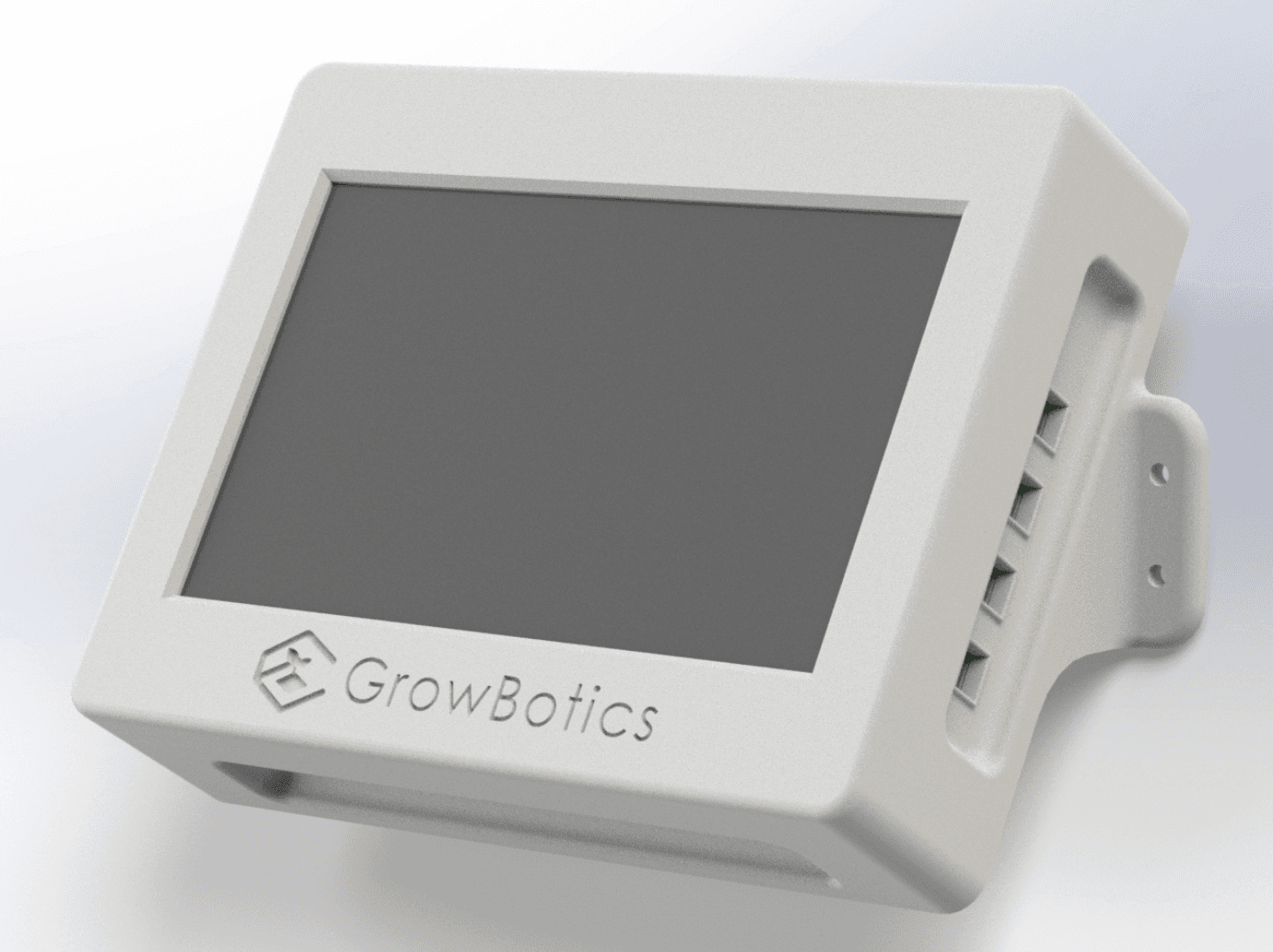The Hidden Infrastructure Costs of Mega-Farm Vertical Agriculture
Why massive facilities demand enormous utility infrastructure, multi-million dollar build-outs, and armies of staff—and how Growbotics' micro-farm strategy delivers superior efficiency.
The promise of vertical farming has always been compelling: year-round, pesticide-free produce grown in controlled environments. But as the industry has matured, a troubling reality has emerged—mega-farm facilities require staggering utility infrastructure, massive capital investments, and complex operational overhead that often undermines their economic viability.
In this comprehensive analysis, we'll break down the true infrastructure demands of large-scale vertical farms: the 2-3 MW power requirements, massive water systems, industrial HVAC installations, and the 12-18 month construction timelines that can cost $20-30 million before the first harvest. Then we'll contrast this with Growbotics' revolutionary micro-farm approach that achieves comparable productivity with a fraction of the infrastructure complexity.
Mega-Farm Scale
100,000+ sq ft facilities requiring massive utility upgrades
Capital Requirements
$20-30M investment, 12-18 month build timeline
Growbotics Alternative
$1.5-2M micro-farms, 2-3 month deployment
The Staggering Utility Demands of Mega-Farms
Electrical Infrastructure: Industrial-Scale Power Requirements
A typical 100,000 sq ft vertical farm consumes between 2,000-3,000 kVA of electrical power—equivalent to a small manufacturing plant. This massive demand stems from high-intensity LED lighting arrays that can consume 30-40 watts per square foot, plus energy-hungry HVAC systems, water pumps, and environmental control equipment.
The infrastructure challenges are immense. Utility companies often require dedicated substations or transformer upgrades costing $500,000-$1 million before construction begins. Backup power systems—typically diesel or natural gas generators—add another $200,000-$400,000 to ensure uninterrupted operation during grid outages.
Water Systems: Massive Recirculation Infrastructure
While vertical farms are touted for water efficiency, mega-facilities still require enormous water infrastructure. A 100,000 sq ft facility typically maintains 100,000+ gallons of recirculating nutrient solution, with flow rates exceeding 500 gallons per minute through complex filtration, sterilization, and monitoring systems.
The supporting infrastructure includes multiple redundant pumps, UV sterilization units, reverse osmosis systems, and automated dosing equipment—often totaling $300,000-$500,000 in equipment costs. Municipal permits for water usage and discharge, plus ongoing monitoring requirements, add regulatory complexity and operational overhead.
HVAC & Environmental Control: Industrial Climate Management
Maintaining precise temperature, humidity, and CO₂ levels across multiple growing tiers demands industrial-scale HVAC systems. Cooling loads often reach 1.5-2 MW capacity to counter heat from LED lighting and maintain optimal growing conditions. Commercial chillers, dehumidifiers, and extensive ductwork installations typically cost $2-3 million.
CO₂ enrichment systems require industrial tanks or on-site generators, adding $100,000+ upfront plus $10,000-15,000 monthly in gas purchases. The complexity of coordinating lighting schedules, CO₂ injection, temperature control, and humidity management across vast spaces requires sophisticated building automation systems.
Mega-Farm vs Micro-Farm Utility Requirements
Electrical Power
Water Infrastructure
Climate Control
Construction Complexity & Timeline Challenges
Building Shell & Structural Requirements
Mega-farms typically require purpose-built facilities or extensive warehouse conversions. Structural reinforcement for heavy water systems, HVAC equipment, and multi-tier racking can cost $1-1.5 million alone. Interior build-outs—including insulation, clean-room walls, overhead lighting infrastructure, and stainless-steel plumbing—often add $3-5 million more.
Systems Integration Complexity
Integrating automated racking, programmable logic controllers (PLCs), environmental sensors, and lighting arrays across 100,000 sq ft requires specialized contractors and months of coordination. Electrical wiring for multi-megawatt service, network cabling for IoT sensors, and SCADA integration typically costs $2-3 million in labor and hardware.
Construction Timeline Comparison
Mega-Farm: 12-18 Months
Growbotics Micro-Farm: 2-3 Months
Key Advantage: No utility upgrades required—plugs into existing building infrastructure
Capital Requirements & Operational Overhead
Mega-Farm Capital Expenditure
Industry reports consistently show that building and launching a 100,000 sq ft vertical farm costs between $20-30 million. This staggering investment breaks down as:
- Building shell & structural modifications: $10-12 million
- MEP (electrical, plumbing, HVAC): $5-7 million
- Automation & racking systems: $2-3 million
- Lighting, pumps, & environmental equipment: $2-3 million
- Permitting, design, & contingency: $1-2 million
Ongoing Operational Expenses
The operational burden is equally daunting. Annual utility costs alone can reach $2-3 million:
- Electricity ($0.10/kWh at 3M kWh annually): $300,000/month
- Water treatment & monitoring: $50,000-100,000/month
- CO₂ supply & generation: $10,000-15,000/month
- HVAC maintenance & filter replacement: $100,000+/year
Staffing Requirements: The Hidden Labor Burden
Despite promises of automation, mega-farms typically employ 50-100 full-time staff across multiple shifts. The breakdown includes:
- Farm technicians & harvest workers: 20-30 employees
- Maintenance & facilities engineers: 5-10 employees
- Quality control & laboratory staff: 5-8 employees
- Operations supervisors & managers: 5-10 employees
- Sales, logistics & distribution: 10-15 employees
- Administrative & support roles: 5-10 employees
Total payroll and benefits for a 75-person operation typically exceeds $5 million annually, depending on regional labor costs and skill requirements.
The Growbotics Micro-Farm Revolution
Lean Infrastructure by Design
Growbotics micro-farms represent a fundamental rethinking of vertical agriculture infrastructure. Our 10,000 sq ft modular facilities require just 100-200 kVA of power—easily accommodated by existing building electrical panels. Water systems use standard municipal connections with compact 5,000-gallon recirculating reservoirs. Climate control relies on efficient split units rather than industrial chillers.
Rapid Deployment Through Modularity
The key to our speed advantage lies in standardized, modular components manufactured in controlled factory environments. Rather than custom-building each facility from scratch, we deploy pre-engineered systems that integrate seamlessly with existing building infrastructure.
In-House Manufacturing & Prototyping Capabilities
Rapid Prototyping & Testing
Fast iteration from concept to production using advanced in-house capabilities.



Scalable Manufacturing
Strategic partnerships enable custom components at production scale.



Dramatic Cost & Timeline Advantages
A complete Growbotics micro-farm costs $1.5-2 million and deploys in 2-3 months:
- Warehouse fit-out (minimal modifications): $200,000
- LED lighting & control systems: $400,000
- Aeroponic towers & infrastructure: $500,000
- HVAC & electrical integration: $200,000
- Sensors, automation & FarmOS: $200,000
Lean Operational Model
Each Growbotics facility operates with just 2 full-time employees:
- Farm technician/operator: 1 employee
- Logistics & fulfillment: 1 employee (+ part-time during peak periods)
Annual payroll under $200,000, plus remote monitoring via our proprietary FarmOS platform further reduces on-site labor requirements. No dedicated laboratory, CO₂ technician, or large maintenance crew needed.
Distributed Network vs. Centralized Risk
The Portfolio Advantage
Rather than betting everything on a single $25 million facility, Growbotics can deploy 25+ micro-farms for the same capital investment. This distributed approach offers compelling advantages:
- Geographic diversification: Multiple markets reduce single-point-of-failure risk
- Faster cash flow: Individual sites reach profitability in 6-12 months vs. 3-5 years for mega-farms
- Market responsiveness: Local facilities can adapt production to regional preferences
- Supply chain resilience: Distributed production eliminates single-source vulnerabilities
Operational Flexibility
Micro-farms enable experimentation and optimization impossible with massive, fixed installations. New crop varieties, growing techniques, or automation upgrades can be tested at individual sites before network-wide deployment. If market conditions change, individual facilities can pivot production or even relocate with minimal disruption.
Economic Model Comparison
Mega-Farm Model
Growbotics Network
Key Insight: Similar capital investment, 40% lower operating costs, 5x faster payback, and distributed risk profile
The Future is Distributed, Not Centralized
The mega-farm approach to vertical agriculture represents industrial thinking applied to a fundamentally different challenge. While impressive in scale, these facilities demand massive utility infrastructure upgrades, multi-million-dollar construction projects, complex operational overhead, and enormous financial risk concentration.
Growbotics has charted a different path—one that recognizes the power of distributed production, modular design, and lean operations. Our micro-farms achieve comparable productivity per square foot while requiring a fraction of the infrastructure investment, deploying 5x faster, and operating with dramatically lower overhead.
As the vertical farming industry matures, the winners won't be those who build the biggest facilities, but those who build the smartest ones. By prioritizing speed, efficiency, and operational flexibility over sheer scale, Growbotics is positioned to lead the next generation of sustainable food production.
The future of agriculture is distributed, efficient, and adaptive—not massive, complex, and rigid. That's the Growbotics advantage.
Ready to Deploy Smart Infrastructure?
Discover how Growbotics micro-farms eliminate the massive utility requirements, construction complexity, and operational overhead of traditional vertical farms—delivering faster ROI and lower risk.
Learn More About Our Micro-Farm Model